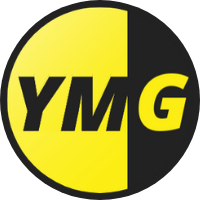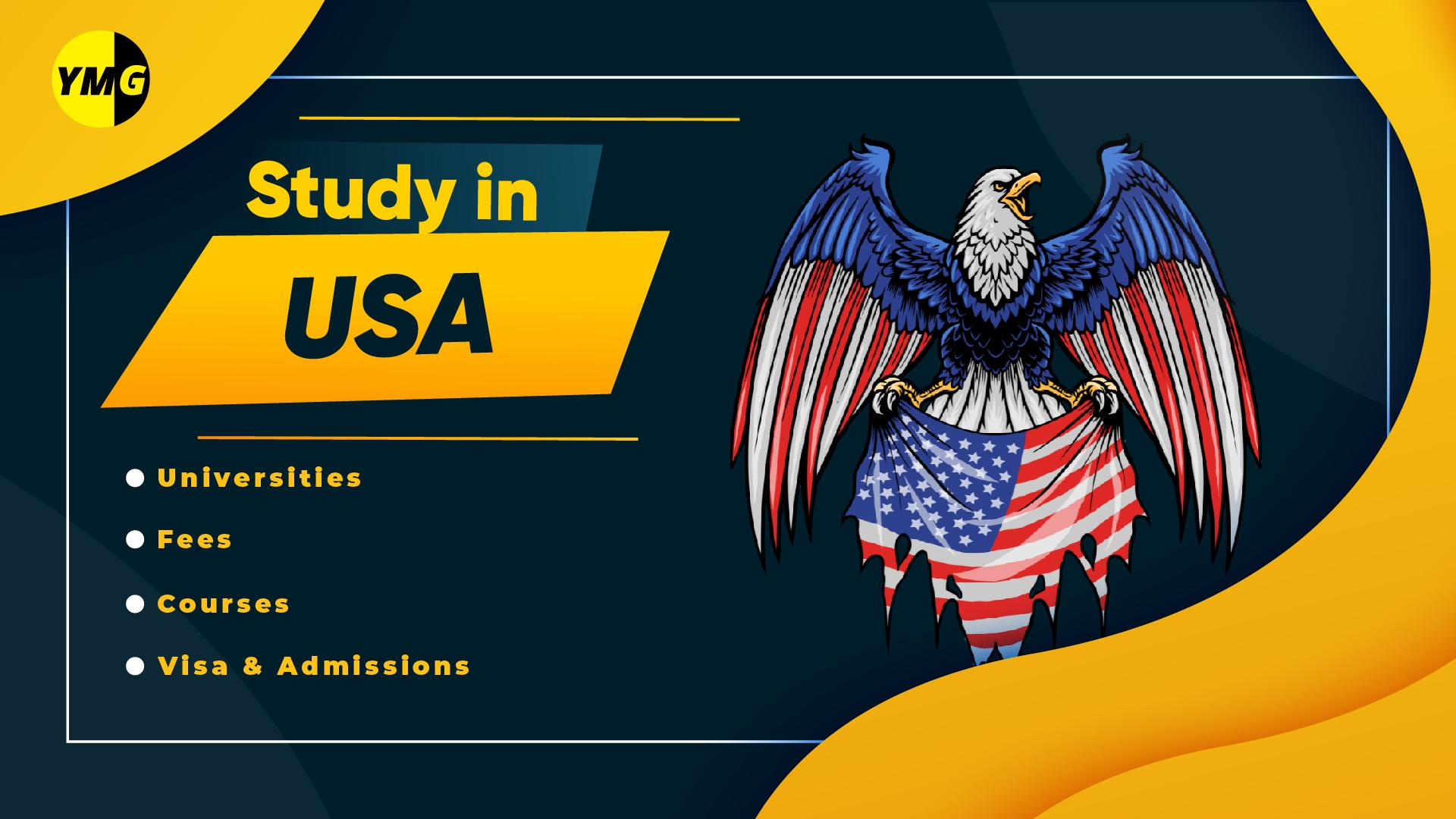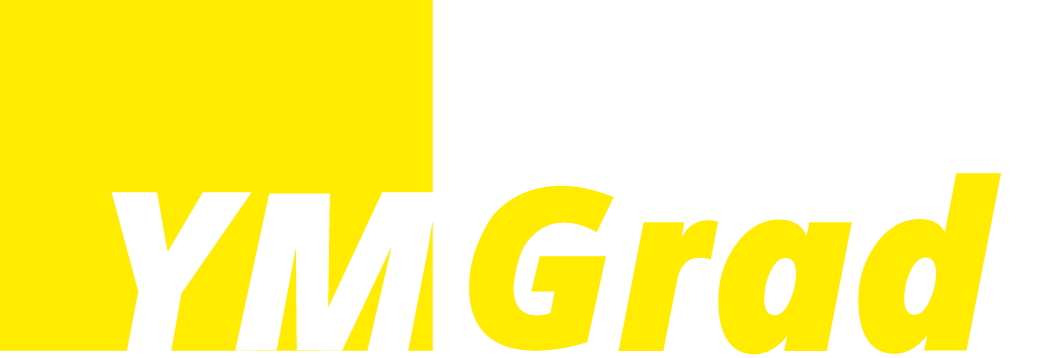Study in USA: Universities, Fee, Courses, Visa, & Admissions


Think about a home of diverse ethnicities, the highest number of top-ranked universities, and attractive landscapes. The United States of America has been an attractive study destination for overseas students for decades. From a life of luxury to the presence of multiple Fortune 500 corporations, the United States of America has it all.
But how can you make your dreams of studying in the USA come true? In this blog, we will explore everything you need to know.
Why Study in USA?
It is a popular fact that the United States of America is among the countries with the most desired higher education. Here are some of the important reasons why students choose to study there:
- Best universities in the world
- Globally Recognized Education
- 3 years of Post-Study Work Permit
- Pathway to PR
- One of the highest ROI (Return on Investment) countries
The nation is known as the land of opportunities, and the education ecosystem syncs well with the established reputation.
Best Locations to Study in USA
The USA is one of the top destinations for international students, with 56 prestigious universities in the top 100 world universities rankings. Here are the top places to study in the country:
- California: The University of California Los Angeles, Stanford University,
- New York: Columbia University, Cornell University
- Boston: Harvard University, Boston University
- Minnesota: University of Minnesota, Bethel University
Intakes in USA
Planning to study in the USA involves more than just choosing a university. A crucial aspect of this journey is understanding the various intakes available for international students. Let's take a brief look at it:
Intake | Starting Month | Deadlines | Nature |
Fall | August | December | Biggest Intake |
Spring | January | August | Second Biggest Intake |
Summer | May | January to April | Most Limited Intake |
These intakes offer flexibility, allowing students to align their studies with their timelines and preferences.
Best Programs to Study in USA
The United States, as a beacon of higher education, offers an array of popular courses that suit the evolving demands of the modern world and make it an ideal destination for international students seeking higher education. Here are the top 10 fields that you should go for:
- Engineering
- Computer Science
- Business Analytics
- Finance
- Medicine
- Data Science & Artificial Intelligence
- Business Administration
- Marketing
- Communications & Media
- Social Science
Cost of Studying in USA
As international students seek to shape their academic aspirations, evaluating the cost becomes an essential step in planning how to navigate the financial aspects of their education.
Degree Level | Annual Tuition |
Bachelor's | $15,000 to $40,000 |
Master's | $15,000 to $75,000 |
| Ph.D. | Fully Funded (Generally) |
PhD programs are typically fully funded, ensuring students focus on their research without financial burdens.
Language Tests
Universities in USA for international students require acceptable scores from specific exams. Here are the most common ones that you will need to take:
- International English Language System (IELTS)
- Test of English as a Foreign Language (TOEFL)
- Pearson Test of English (PTE) (Limited Recognition)
Application Process
- Shortlisting the right universities is the first and most important step in your application process. You must thoroughly research all the courses offered in your discipline in the USA. Make a list of institutions that suit your needs and add parameters like faculty, fees, and research labs.
- Percentage requirements: If you are applying for a Bachelor's degree in America, you must have scored 80% in your earlier high school qualification.
- Language Tests: American universities accept scores from tests like IELTS and TOEFL, which are necessary for all international students.
- Standardized Tests: The top-ranked universities in the USA consider a GRE score of 325 or higher for acceptance into their MS/MBA programs. To get into the top USA-based business schools, you are required to have a GMAT score of 700 or above.
- SOP Drafting: The Statement of Purpose (SOP) is mandatory in your application to American universities. A well-written SOP can help your application stand out amongst applicants. Elevate your application with a standout SOP crafted by our experts, tailored to your unique aspirations. Click here to get yours!
- Applications: If you're ready to apply in the USA, you can submit your online applications to the universities through an educational agency. Click here to get started with us!
USA Student Visa
As an international student coming to the United States, you could be issued one of three student visas: an F-1 Visa, a J-1 Visa, or an M-1 Visa. The F-1 and J-1 visas allow for the possibility of employment in the US during your stay, while the M-1 Visa does not. You need to be familiar with the types of visas, how they impact your financing while in the USA, and how to go through the application and arrival processes.
F-1 Student Visa
- The "F" visa is for academic studies. An F-1 visa is issued to students attending an academic or English Language Program.
- F1 visas are the most common form of international student visa in the U.S.
- F1 students must maintain the minimum course load for full-time student status. F-1 status allows part-time, on-campus employment (fewer than 20 hours per week).
J-1 Student Visa
- A J-1 visa is issued to students who need practical training not available in their home country to complete their academic program.
- J-1 student status allows for similar employment as the F-1 visa, with similar restrictions, as long as the exchange visitor program sponsor gives permission.
M-1 Student Visa
- An M-1 visa is issued to a student who will attend a non-academic or vocational school.
- M-1 visa holders for technical and vocational programs are not permitted to work during the course of their studies.
- The M-1 student visa applicants must have evidence that sufficient funds are immediately available to pay all tuition and living costs for the intended stay.
Post-Study Work Permit
The United States is recognized for its dynamic industries and multinational businesses that provide an ideal environment for graduates to use the skills and knowledge they have gained in the real world.
- Eligibility to apply for a post-study work permit in the USA is through an Optional Practical Training (OPT) extension or STEM OPT extension to your F-1 visa, which can allow you to stay in the US legally after you graduate. You can apply for 12 months of OPT at each education level. If you are eligible for a STEM OPT extension of 24 months, then the total OPT duration is 36 months.
- Curricular Practical Training (CPT) is an alternative work/study, internship, or practical training that a sponsoring employer offers through cooperative agreements with your college or university. To qualify for CPT, you must be an F-1 student and have completed one full academic year of study at a US institution.
Criteria | CPT | OPT |
Importance | CPT offers students practical experience before graduation | OPT helps the student to gain practical experience after graduation. |
Requirements | Students must be carrying a particular employment offer which meets the requirements of the institution | Students must not have used 12 months or more of full-time CPT |
Duration | Valid for 12 months | Valid for 12 months STEM OPT extension is valid for 36 months |
Connect With Us!
We hope this blog post has shed light on studying in USA and all its opportunities. Do you want us to take care of your complete application? We make sure that every part of your application is consistent, coherent, and perfectly crafted, as the committee would expect in the case of their ideal candidate.
Even if your profile is impressive, a different perspective can make you look better than most applicants out there. We believe this perspective exists for every applicant out there, including you. Let's find that perspective for your case and craft an exceptional application specific to your profile.
Frequently Asked Questions!

They can stay in the US for up to 60 days after finishing their academic program unless they applied for and were accepted to carry on working for a while under the OPT Program. F-1 students must complete their studies by the termination date on their I-20 form.

After you complete your course of study, you can continue to work in the United States for around a year through curriculum practical training or optional practical training. If you engage in either type of training and get the appropriate visa, you may be able to petition the U.S. government for a green card.

Most universities require an IELTS score for a student visa in the USA is 6.5. The English language proficiency requirements for a student visa (F-1 visa) to study in the USA can vary depending on the specific institution and program you plan to attend.

The academic year usually runs from August through May with breaks for holidays. Most universities use either the semester system (two terms), the quarter system (students attend three out of four total terms), or the trimester system (three terms).

Letter grades indicate a student's academic performance. Each letter grade has a numeric value which is used to calculate a GPA, on a scale of 4.0.

MBA programs typically last one to two years.

There are a number of programs for English language study in the United States and online, as well as local possibilities. You can also seek help from us at YMGrad.com where our expert counsellors will evaluate your profile and help improve your chances of getting admission to your dream university.

In the United States, educational institutions generally accept a one-year study gap, but students must provide justification and evidence for gaps longer than a year.

Indian students studying in the USA on an F-1 student visa are generally allowed to work part-time on-campus during their academic programs, up to 20 hours a week. During authorised breaks like summer and winter vacations, they can work 40 hours per week.

Overall, higher education in the US offers more opportunities for practical exposure, research, and global exposure, while higher education in India focuses more on theoretical learning and specialization in the chosen field of study




